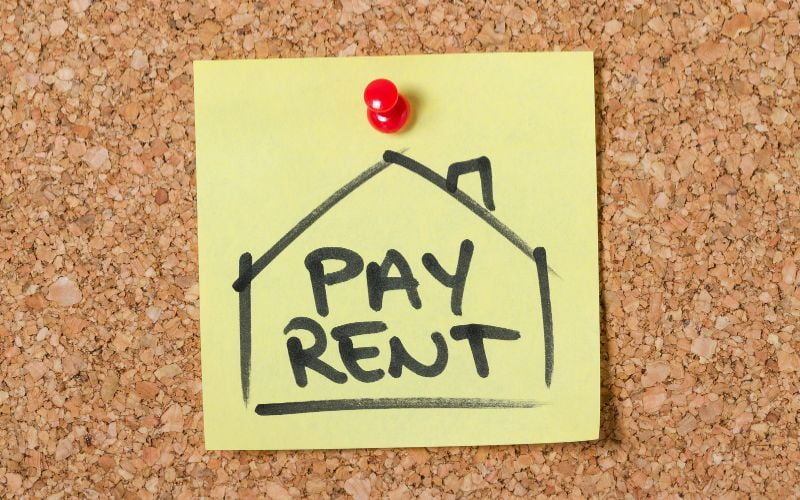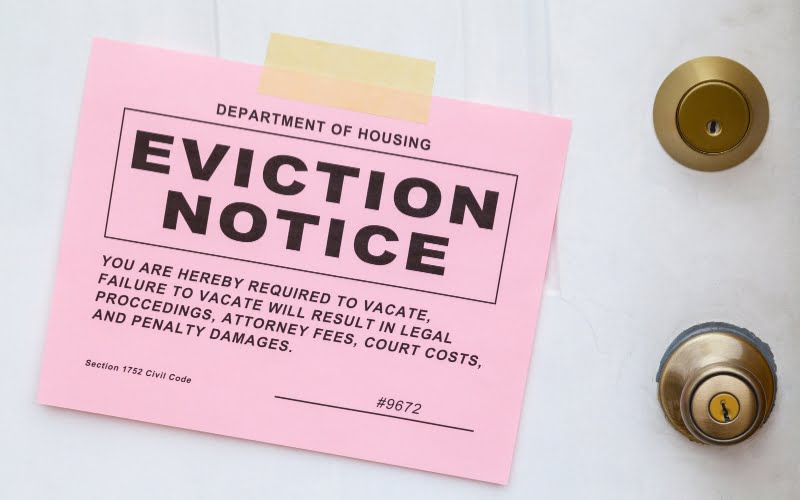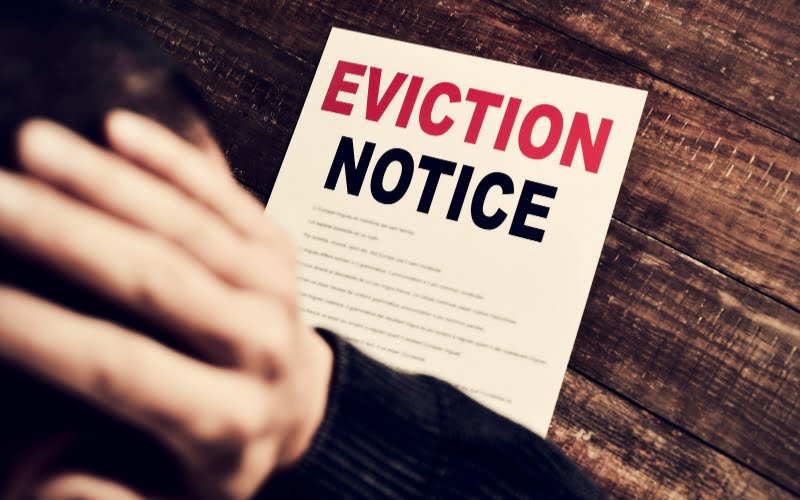Last Updated on March 18, 2024 by Kelvin Nielsen
Under Alaska law, a landlord can evict a tenant for nonpayment of rent. As a landlord, you must go through the state’s judicial process for the removal to be successful.
You must not use self-help means to try to get the tenant to leave. Neither should you try to retaliate against the tenant to force them to abandon their rented premises. All these actions are illegal and can get you in trouble.
When looking to evict a tenant for nonpayment of rent in Alaska, the following is the step-by-step process that you must follow.
How to Evict a Tenant for Nonpayment of Rent in Alaska
Step #1: You must first have a legal ground.
A legal ground is a legitimate reason for tenant eviction. In Alaska, aside from nonpayment of rent, other legal grounds for tenant eviction include the following.
- End of lease / no lease
- Nonpayment of utilities
- Property damage exceeding normal wear and tear
- Illegal activity
Once you have a legal reason, you can then proceed to the next step: serving the tenant with an eviction notice.
Step #2: Serve the tenant with a 7-Day Notice to Quit.
To kickstart the eviction process against a tenant for nonpayment of rent, you must serve them a 7-Day Notice to Quit. This will give the tenant 7 days to either pay the balance due or move out.
Under Alaska law, rent is due at the beginning of each pay period, unless the lease says otherwise. And it becomes late immediately after it is due.
If the tenant fails to pay the balance due or move out within 7 days, you can move on with the eviction process. The next step would be to file a lawsuit in court.
When writing the 7-day notice to quit, make sure to include the following critical details lest it becomes ineffective and delays the eviction exercise.
- All adult tenants’ names.
- The address of the rental property.
- The rent balance and the due date.
- The total amount the tenant must pay.
- Where the rent amount should be paid.
- The date when the tenant must have paid the balance due.
- The date of serving the notice.
- The landlord’s signature.
- The landlord’s address and phone number.
Additionally, you must serve the notice in the appropriate manner. The following are the acceptable methods of serving an eviction notice to a tenant in Alaska.
- Delivering it in person.
- Handing the notice to a person of a suitable age AND mailing another copy by certified or registered mail.
- Posting the notice on the entry door, or any other conspicuous place at the premises, AND mailing another copy to the tenant by certified or registered mail.
Step #3: File a lawsuit with the court.
If the tenant continues to stay and doesn’t pay the balance due within 7 days, you can escalate the matter to the court. In the court, you’ll need to file a summons and complaint.
After successful notarization by the county clerk, the summons and complaint will be forwarded to the county sheriff for onward service to the tenant.
Ensure that the summons and complaint is served on the tenant at least 2 days before the hearing.
Step #4: Wait for the tenant to file an answer.
Alaska law gives tenants the right to answer an eviction complaint. The response must be in writing and must be filed with the court within 20 days.
By filing an answer, the tenant will have potentially extended their stay at the property as the eviction will take much longer to complete.
In the state of Alaska, the tenant may be able to fight/stop or delay their eviction by alleging any of the following.
- The landlord used illegal eviction methods against the tenant.
- The tenant resolved the violation. For instance, paid the balance due within 7 days.
- The eviction was based on the tenant’s race, color, nationality, gender, or another protected class.
- The eviction was a retaliatory tactic employed by the landlord after the tenant exercised a legal right.
- The tenant did not violate a term of the lease as the landlord alleged.
- The eviction notice had substantial errors.
If the court finds no merit in the defense the tenant gives, the process will continue. However, if it does, then you may have to stop the eviction or fix the errors and restart the process.
Step #5: Attend the court hearing.
In Alaska, eviction hearings are usually held 15 days after the eviction complaint is successfully filed with the court. A continuance may be granted, however.
If the tenant doesn’t show up for the hearing, the court will most likely issue a default judgment. However, if the tenant does contest the eviction, then a hearing will be held. The tenant may be required to pay the balance due to the Court Clerk until the case is heard and determined.
It goes without saying that you should come properly prepared for the hearing. Carry copies of the lease, eviction notice, eviction complaint, and any other supporting evidence.
If the judgment is made in your favor, the court will issue you with a Writ of Assistance.
Step #6: Removal of the tenant.
A Writ of Assistance is a court order that eventually authorizes the removal of the tenant from the property and returns possession of the property back to the landlord. Only the sheriff can execute the writ against a tenant.
Once issued, the writ gives the tenant 24 hours to move out of the property.
Frequently Asked Questions (FAQs): How to Evict a Tenant for Nonpayment of Rent in Alaska?
Q: How long does it take to evict a tenant for nonpayment of rent in Alaska?
A: Generally speaking, expect the process to take around 28 days. It can also take more time if the tenant fights the eviction or appeals against the decision to kick them out, among other things.
Q: How do I serve an eviction notice in Alaska?
A: In Alaska, it’s the landlord’s responsibility to serve an eviction notice to their tenant. The eviction notice to serve must be relevant to the just cause. A landlord must serve it in either of three ways.
- In person.
- Leaving a copy with a person of suitable age AND mailing another to the tenant’s last known address via certified or registered mail.
- Leaving a notice in a conspicuous place, such as on the front door. You must also send another copy to the tenant’s last known address via certified or registered mail.
Q: How much does it cost to evict someone in Alaska?
A: The cost will vary depending on the reason for the eviction, the complexity of the case, and court- and attorney fees. That said, on average, expect the process to set you back by around $450.
Additionally, you may also incur other costs such as locksmith fees, cleaning fees, and repair fees.
Q: What is the 7-day eviction notice in Alaska?
A: This is a type of eviction notice that a landlord must use when evicting a tenant for nonpayment of rent. The notice will give the tenant 7 days to either pay the balance due or move out within 7 days. The landlord may continue with the process if the tenant chooses to ignore the notice.
Q: Can a tenant withhold rent in Alaska?
A: No, this isn’t a legal option for tenants when their landlords don’t make repairs within the required time. The Alaska Uniform Residential Landlord and Tenant Act (URLTA) also doesn’t allow tenants to make repairs themselves and deduct the cost from their rent.
The legal options tenants have when it comes to repair issues is to sue the landlord or break the lease without penalty.
Conclusion
Alaska law gives landlords the right to evict their tenants for certain legitimate reasons, such as nonpayment of rent. Just make sure to follow the proper eviction process lest the process stops or delays.
Disclosure: The content herein isn’t a substitute for advice from a professional attorney. It’s only meant to serve educational purposes. If you have a specific question, kindly seek expert attorney services.
Sources: https://law.alaska.gov/, https://law.justia.com/codes/alaska/2020/title-34/chapter-03/,

Hi, I’m Kelvin Nielsen, an experienced landlord and accomplished real estate lawyer. My focus is on answering your questions about renting in the hopes of making your life as a renter or a landlord a bit easier.







